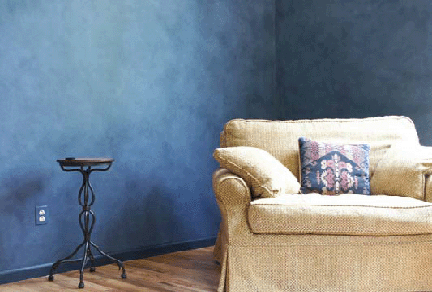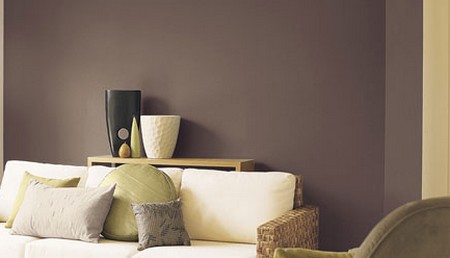Paint finishes are not only fun to do but also can be used to change any surface in your home, whether woodwork or wall, into something unique. For, no matter how expert, no one else will ever be able to copy exactly what you have done. Paint finishes can help disguise uneven wall surfaces and poor plasterwork, and they can also add depth to flat walls. You can hire Professional Carpenters perth or even do it yourself. A Commercial Abatement service may also be required to remove old paint in your walls.
The essential thing is to prepare the surface to be worked on very carefully, and not to get carried away – paint finishes look best as detailing, if you want to keep getting painting tips, remember to constantly check the Home Painters Bulletin news.

Techniques of paint finishes
Several techniques are described below and they can all be effectively combined. Try out each finish before you begin and, if you can, work with someone else (one of you applying the glaze or wash and the other removing it) as the most difficult part is often achieving a consistent result over a large area. When working on your own, it is usually best to work in 2 ft (60 cm) vertical strips, making sure you do not overlap them as you go. Try these colors as an easy way to make your home pop and stand out.
The paint finishes described below are known as ‘distressed’ finishes, because they are all to do with broken colour. In each case you start by painting an opaque background of either oil-or water-based paint, on top of which you use a glaze or wash – but only once the background colour is completely dry. The various finishes are produced by the tools used (combs, sponges, rags etc) and the colours chosen.
Choose your colours carefully. If you mix too many strong colours they cancel each other out. Start by slowly adding colours and experiment.
Professional painters at Euro Painting will give you all the necessary detail about the painting process. They will help you to pick the right colours for your interiors and exteriors and, will also keep you updated throughout the complete painting process, Get More Info at their website.
Special effects in context
At the end of the seventeenth century rich and special effects, like elaborate marbling and graining, were carried out by professional painter-decorators on doors, pillars, bannisters, alcoves and occasionally walls. These decorators also specialized in painting walls with glazed effects. These were achieved by applying thin washes of transparent colour over paler, often white, grounds so the paler background seemed to glow through. When it became possible to buy ready-mixed paints the days of the subtle paint finishes were numbered: the house servants painted the walls.
Graining and marbling returned to favour at the end of the eighteenth century and remained popular until
Distressed paint finishes
Dragging
The dragging effect, resembling a fine, striped texture similar to natural fibre, works by removing the colour using a fairly firm brush. First you paint the wall with a thin glaze or wash and then you drag the brush over it to remove the paint. This is best carried out by two people, one painting on the glaze, another dragging it off.
Rag-rolling
Rag-rolling is a technique done with a rag. The rag itself can be of any fabric and used in any shape, although the standard shape is to bunch the rag into a loose sausage.
One way of using the rag to give the impression of crushed velvet is to roll it down the wet glaze or wash and let it remove some of the colour. Another way is to press it on the wall over the wet colour in different directions, giving a softer, more mottled look. Both of these techniques are again best done with the help of another person. A third technique is to dip the rag itself into the glaze and then rub the surface with a polishing motion until a soft textured, cloudy finish is produced.
Spattering
Spattering can be messy. It involves flicking specks of paint onto a surface using either a coarse-bristled brush, or a spray which will give a fine misted effect. Varnish the surface once you have finished to protect the end result.

Sponging
Sponging can be done in two ways. One way is to dab one or more glaze or wash colours over the base with a natural sponge. The other way is to paint the glaze or wash straight onto the base, and then dab the sponge over the top, removing some of the wet glaze. The first effect has a soft, cloudy look, the second more of a mottled effect.
Stippling
A stippled finish is produced in the same way as a dragged one, only using either a small, hard-bristled stippling brush, a dry rag or a paint roller (as long as the roller does not slide over the wet glaze). You simply press the brush, rag or paint roller into the wet glaze or wash and when you remove it some of the wet colour will have lifted off as well. The finished effect is of tiny specks of colour over an even base.
If you don’t have time to do it yourself, you can always hire these house painters near Gresham.